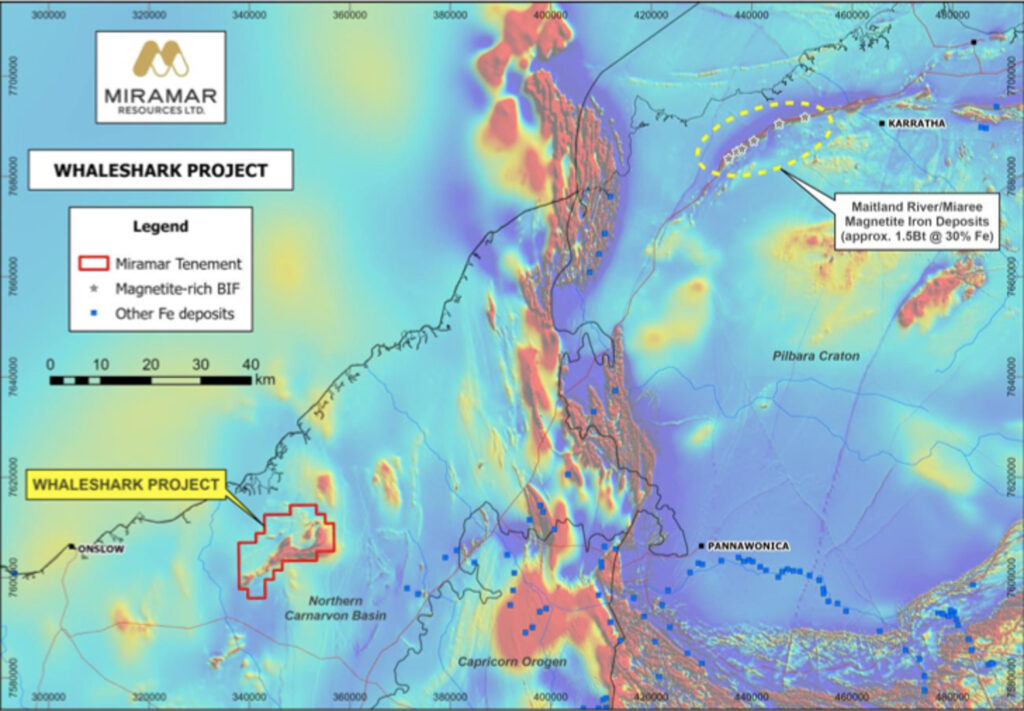You might be interested in
Mining
Miramar Resources could be on the cusp of a new gold camp as first RC hole at Blackfriars wraps up
Mining
Miramar Resources is getting stuck into gold and critical minerals projects across WA
Mining
Mining
Special Report: A review of historical drill data has revealed some potentially significant magnetite iron opportunities at Miramar Resources’ Whaleshark project in WA.
Drilling conducted at the project by Western Mining Corporation (WMC) in the 1990s – when exploration was focused on iron oxide copper-gold – intersected notable widths of magnetite-rich banded iron formation averaging >25% Fe beneath younger sediments, with several holes ending in mineralisation.
Miramar Resources (ASX:M2R) recently re-examined those holes, following completion of its own diamond drilling campaign, and is now confident they represent two potentially large magnetite iron ore deposits.
Magnetite is a highly magnetic iron oxide mineral that, once processed, has a higher grade concentrate than hematite ores and produces pellets containing 65% to 70% Fe, which can be used in blast furnaces or in direct reduction steel-making plants.
The pellets also attract higher prices from steelmakers, which can offset the lower ore grades and higher costs of production.
While inspecting the core from the historic WMC drill holes, M2R staff noted similarities between the banded iron formation seen at Whaleshark and limited samples of the Cleaverville Formation, which hosts the Maitland River and Miaree magnetite iron deposits in the Pilbara.
Based on this review, the company believes the magnetic anomalies seen at Whaleshark are similar in scale to the 1.5Bt Maitland River and Miaree magnetite iron deposits.
“The recognition of two potentially very large magnetite iron deposits is very significant for Miramar, especially given the location of the Whaleshark project with respect to existing infrastructure,” M2R executive chairman Allan Kelly said.

As a result of work completed to date, the company believes there is potential for multiple styles of mineralisation within the Whaleshark Project including:
M2R is now finalising exploration work to be completed at Whaleshark during 2024 which will include a low-cost passive seismic survey to map the depth to basement across the project, a heritage survey covering potential drill sites, and further aircore drilling to map basement geology and/or interface geochemical anomalism.
This article was developed in collaboration with Miramar Resources, a Stockhead advertiser at the time of publishing.
This article does not constitute financial product advice. You should consider obtaining independent advice before making any financial decisions.